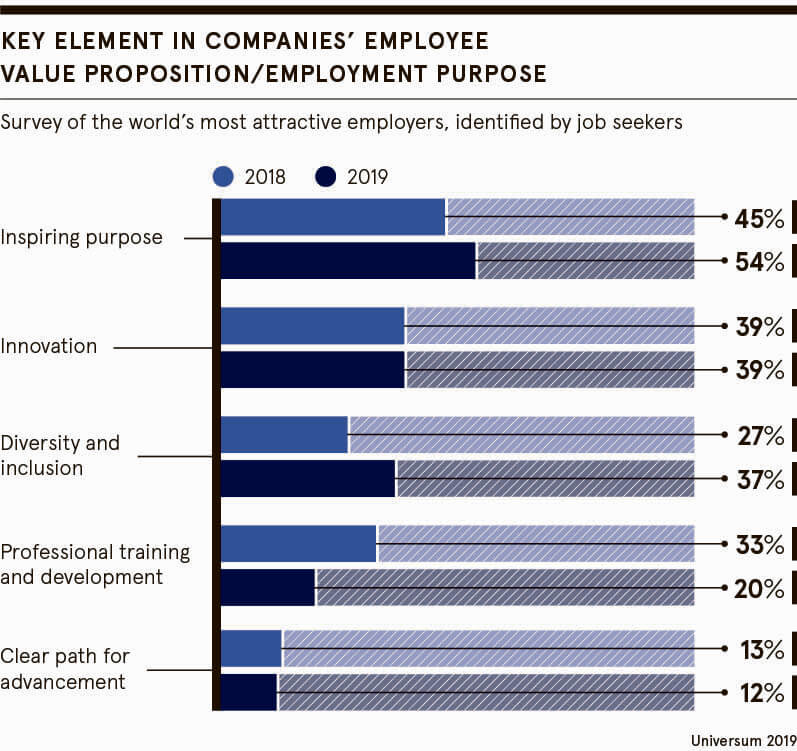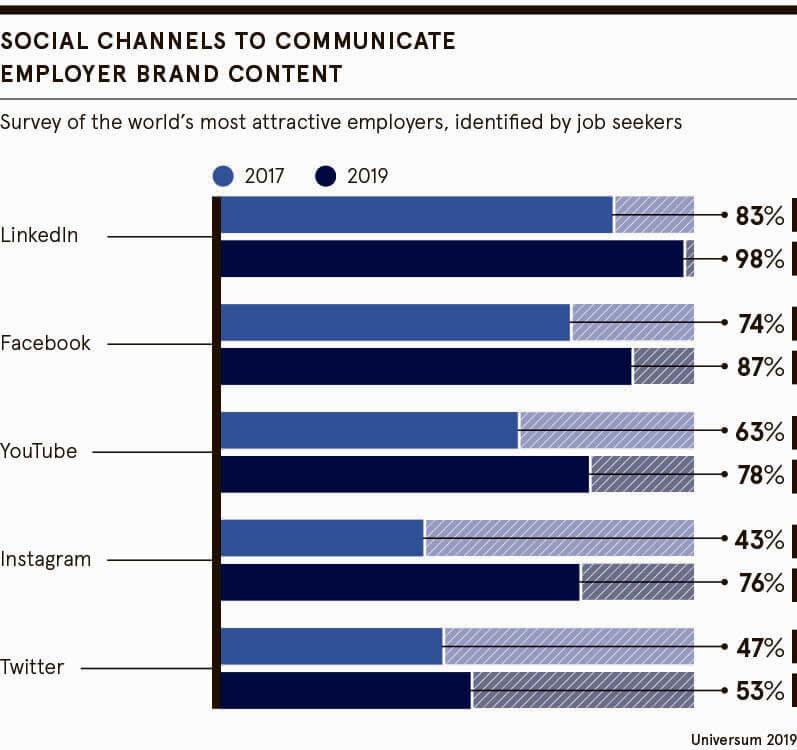Tara Mansfield, head of people at app-based bank Monzo, is aiming to hire 500 new staffers this year. It’s a lot, but she’s not worried. She’s confident Monzo’s employer brand, or how it’s perceived as a place to work, is strong enough to attract the right people.
Numbers back her theory up. Last year, Monzo tripled its headcount, hiring 1,000 new “Monzonauts”, as she calls them. The new joiners probably won’t be leaving any time soon, either. Monzo boasts a 3 per cent staff turnover rate, less than half the finance industry’s average of 6.1 per cent, according to XpertHR. Not bad for a four-year-old business that’s aggressively scaling.
Mansfield says Monzo’s success largely comes down to how it presents itself to candidates. A flick through the company’s website shows how it’s done.
The “about” page outlines the company’s mission to build “a bank, together”, which may sound fluffy, but effectively signposts its values not only to potential customers, but prospective employees too. Meanwhile, its blog is filled with updates on Monzo’s latest projects and progress on diversity and inclusion, alongside more customer-focused personal finance guides.
“From the moment someone thinks they want a job at Monzo and they start to research, we want that to be a positive experience, but also an accurate experience. We’ve published so many blogs around our approach and our mindset, so candidates know the ethos and values of the company before they arrive,” says Mansfield. “We’re optimising for [hiring] efficiency.”
Attract, recruit, retain: the employer branding equation
It may seem strange for a modern employer such as Monzo to be referencing 1990s corporate lingo, but the concept of employer branding has made a comeback among savvy human resources leaders.
Record low unemployment rates across the UK and America have created a fiercely competitive talent market, while the advent of social media has made it easier than ever for workers to research and share their own experiences of what it’s like to work for a company. Employee review site Glassdoor now racks up an estimated 60 million users a month, according to SimilarWeb, while a 2019 survey by Wonderful Workplaces found 94 per cent of jobseekers consider an employer’s reputation when applying for jobs.

Employer branding, therefore, has become a priority for businesses not only hoping to differentiate their roles among the sea of job advertisements, but attract the right people to apply for them. However, beyond communicating the ethos of a business and the value it offers employees, how can they gauge how successful their employer brand actually is?
Jörgen Sundberg, founder of employer branding agency Link Humans, says internal data can show if a company is “attracting the right people but also, in the nicest possible way, repelling the wrong people”. He says the key metrics to pay attention to are the number of candidates applying for a job and the quality of those candidates; in other words, how many of those applicants are actually a good fit.
Prioritising candidate experience
To get hold of this data, a number of applicant tracking systems (ATS) are on the market. Companies such as Recruitee, Workable, Greenhouse, Lever and GoHire each promise to not only collect data throughout the hiring process, but also streamline and strengthen a company’s employer branding by helping them to deliver a more efficient candidate experience.
These end-to-end solutions can automate almost every step of the hiring process, from screening CVs and organising interviews to delivering employment contracts. Not only do these systems make HR teams’ lives easier, they also reduce the risk of candidates dropping out during the process as a result of poor or slow communication.
“It’s the difference between being an administrator and being someone who can actually move more into a consultative role,” says Adrie Smith, head of content and branding at Recruitee, which has helped to revamp hiring at Starbucks, Singapore Airlines and Lacoste. “Instead of spending maybe three or four hours a day on those recurring manual tasks, you can devote that to strategy.”
Top talent needs a human touch
An algorithmic buffer that can stem the flood of CVs, only allowing the best to slip through, is an appealing concept for stretched HR teams. But Sophie Theen, an HR expert who has overhauled hiring processes at Revolut, the UK’s most valuable fintech firm, and consultancy 11:FS, cautions: “Companies that want to succeed in having a great employer brand should be careful not to rely on external parties.
“What’s important isn’t the technology, it’s the fact that the talent team now needs to accommodate themselves to make full use of this technology. Because a lot of things can be automated, they need to put more effort into thinking about the templates, the kind of information they communicate.”
Mansfield agrees that not every process is ripe for automation. “We look at every single CV,” she says. “Otherwise you might miss genuinely brilliant candidates. Some of the best people at Monzo didn’t follow a traditional career path, they didn’t do A levels or go to university; they’re just very smart and incredibly hard-working people.”
Instead, when Monzo uses a tool like Greenhouse to track the candidate experience, it’s more interested in using it monitor internal key performance indicators such as its goal of conducting interviews with developer talent within a week of receiving their application or identify where diverse talent is dropping out of the funnel. The data can then inform any tweaks that need to be made to the company’s employer branding messaging.
Not just about the job offer
Building a robust employer brand takes time, effort and patience. It also costs money, according to the SMB Guide, a subscription to Lever’s ATS product can range from $3,000 to $125,000 a year, depending on an organisation’s size. Consultants also charge huge sums to overhaul employer brands. So, is it worth the expense?
“The positive impacts are going to be higher [applicant] numbers, which leads to higher quality candidates and a better outcome for your business,” says Joseph Whyles, vice president of customer success at GoHire. “If you’re looking for people at the top of their game and you’re not attracting them, that’s going to negatively impact your business.”

Indeed, an optimised hiring strategy, bolstered by a strong employer brand, can positively influence the bottom line. A business that winds up hiring individuals who aren’t aligned on a personality or values basis will see increased people costs and lost productivity as excess time is spent onboarding replacement hires. Brands that are proactively investing in their employer branding, meanwhile, tend to benefit from increased employee engagement and can achieve a 28 per cent reduction in staff churn, according to LinkedIn.
For Virgin Media, the impact of a poor candidate experience started to be felt elsewhere in the business as rejected candidates, so upset by their encounters with hiring teams, were revoking their custom. The company estimates it lost 7,500 contracts, or £4.4 million in revenues, as a result of poor candidate experience in 2014. To fix the problem, Virgin devised a “gold standard” interview process, and hooked up its HR and marketing teams to ensure they were communicating their values as an employer effectively.
“The reality is there’s never a time in a company when you’ve invested in people and it has gone to waste,” Theen concludes. “If your potential candidates have a great experience, they will also become your ambassadors out in the market.”
Attract, recruit, retain: the employer branding equation






